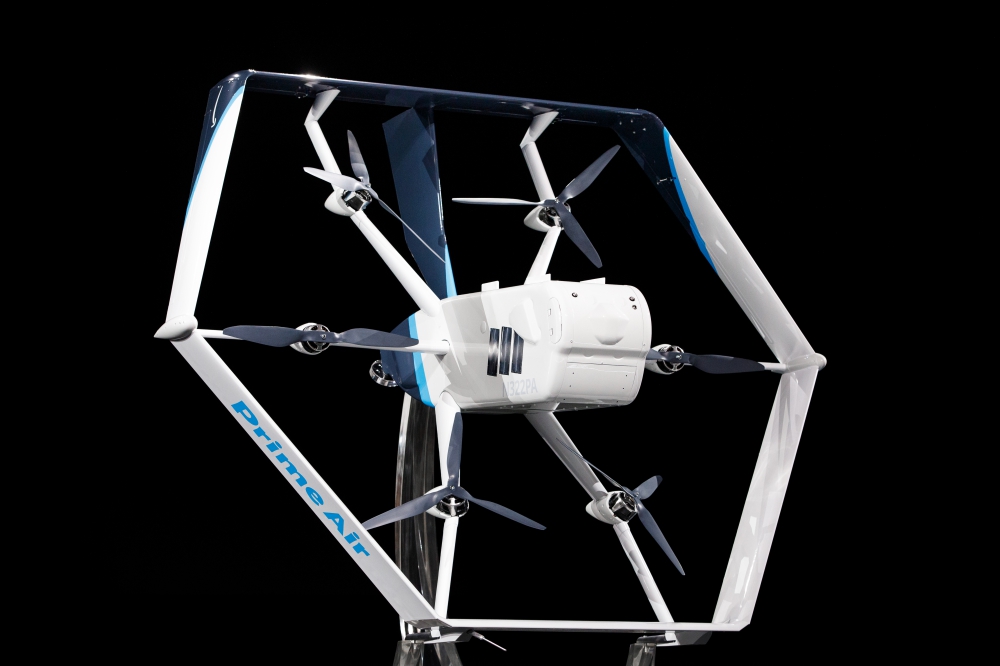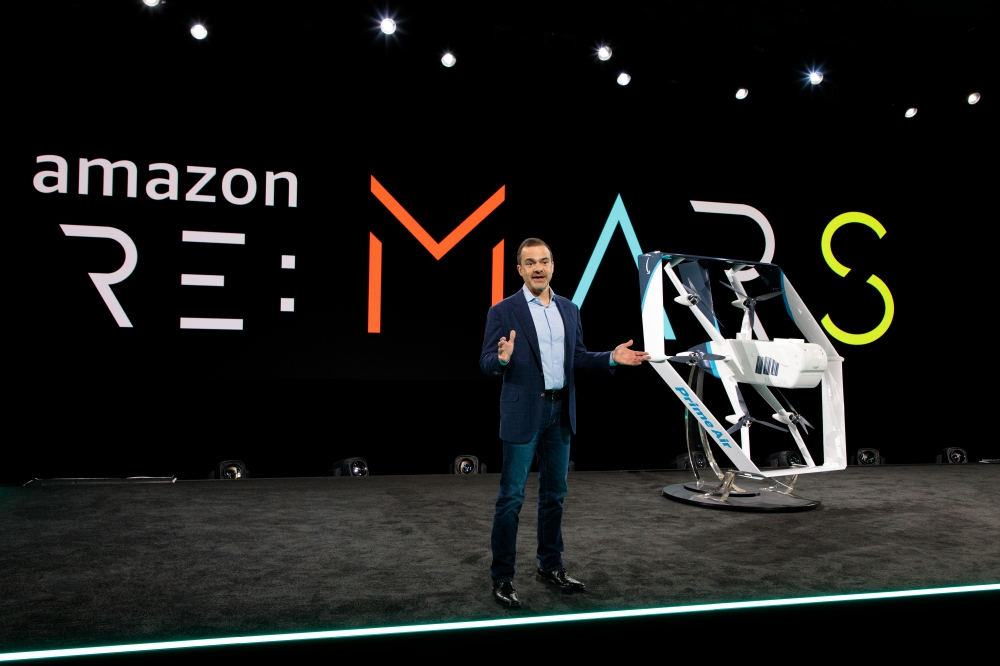During Amazon’s re:MARS Conference (Machine Learning, Automation, Robotics and Space) in Las Vegas, the company unveiled its latest Prime Air drone design.
Amazon has been actively working to build fully electric UAS that can fly up to 15 miles and deliver packages under five pounds to customers in less than 30 minutes. The company says that with the help of its fulfillment and delivery network, it expects to scale Prime Air “both quickly and efficiently,” using the UAS to deliver packages to customers within months.
Our newest drone design includes advances in efficiency, stability and, most importantly, in safety. It is also unique, and it advances the state of the art. How so? First, it’s a hybrid design. It can do vertical takeoffs and landings – like a helicopter. And it’s efficient and aerodynamic – like an airplane. It also easily transitions between these two modes – from vertical-mode to airplane mode, and back to vertical mode.
It’s fully shrouded for safety. The shrouds are also the wings, which makes it efficient in flight.
The distinctive aircraft is controlled with six degrees of freedom, as opposed to the standard four. This makes it more stable, and capable of operating safely in more gusty wind conditions.
We know customers will only feel comfortable receiving drone deliveries if they know the system is incredibly safe. So we’re building a drone that isn’t just safe, but independently safe, using the latest artificial intelligence (AI) technologies.
What does that mean? Here’s one way to think about it: Some drones are autonomous but not able to react to the unexpected, relying simply on communications systems for situational awareness. If our drone’s flight environment changes, or the drone‘s mission commands it to come into contact with an object that wasn’t there previously—it will refuse to do so—it is independently safe.
Let me explain by considering two of the drone’s main delivery stages: In transit to a destination, and when approaching the ground.
In transit:
Our drones need to be able to identify static and moving objects coming from any direction. We employ diverse sensors and advanced algorithms, such as multi-view stereo vision, to detect static objects like a chimney. To detect moving objects, like a paraglider or helicopter, we use proprietary computer-vision and machine learning algorithms.
Approaching the ground:
For the drone to descend for delivery, we need a small area around the delivery location that is clear of people, animals, or obstacles. We determine this using explainable stereo vision in parallel with sophisticated AI algorithms trained to detect people and animals from above.
A customer’s yard may have clotheslines, telephone wires, or electrical wires. Wire detection is one of the hardest challenges for low-altitude flights. Through the use of computer-vision techniques we’ve invented, our drones can recognize and avoid wires as they descend into, and ascend out of, a customer’s yard.
We’re also thrilled about the potential environmental impact. Prime Air is one of many sustainability initiatives to help achieve Shipment Zero, the company’s vision to make all Amazon shipments net zero carbon, with 50% of all shipments net zero by 2030. When it comes to emissions and energy efficiency, an electric drone, charged using sustainable means, traveling to drop off a package is a vast improvement over a car on the road. Today, most of us run to the store because we need an item now. With a service like Prime Air, we’ll be able to order from home and stay home. This saves tremendously on fuel usage and reduces emissions.
Source: Amazon Blog


